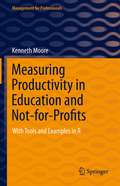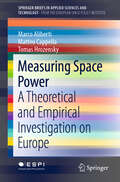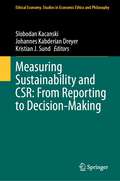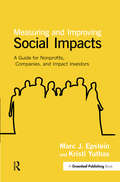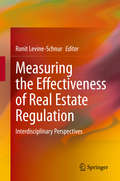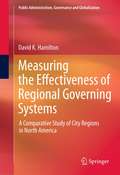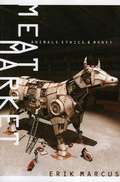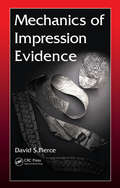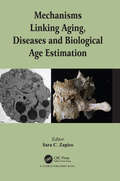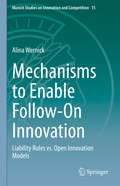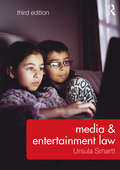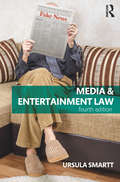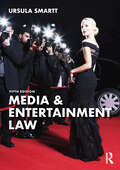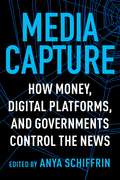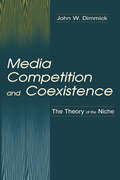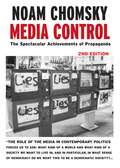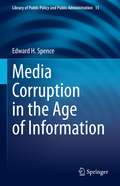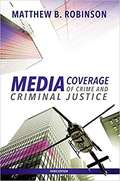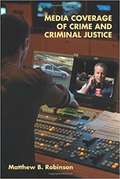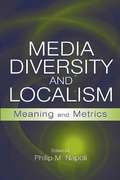- Table View
- List View
Measuring Productivity in Education and Not-for-Profits: With Tools and Examples in R (Management for Professionals)
by Kenneth MooreThis book takes the reader through real-world examples for how to characterize and measure the productivity and performance of NFPs and education institutions—that is, organisations that produce value for society, which cannot be measured accurately in financial KPIs. It focuses on how best to frame non-profit performance and productivity, and provides a suite of tools for measurement and benchmarking. It further challenges the reader to consider alternative and appropriate uses of quantitative measures, which are fit-for-purpose in individual contexts.It is true that the risk of misusing quantitative measures is ever-present. But does that risk outweigh the benefits of forming a more precise and shared understanding of what could generate better outcomes? There will always be concerns about policy and performance management. Goodheart’s Law states that once a measure becomes a target, it is no longer a good measure. This book helps to strike a meaningful balance between what can be measured, what cannot, and how best to use quantitative information in sectors that are often averse to being held up to the light and put on a scale by outsiders.
Measuring Space Power: A Theoretical and Empirical Investigation on Europe (SpringerBriefs in Applied Sciences and Technology)
by Marco Aliberti Matteo Cappella Tomas HrozenskyThis book provides an in-depth investigation of the concept of space power and devises a novel conceptual framework for empirically measuring and comparing different typologies of space actors on the basis of clearly defined criteria. In turn, the book identifies a comprehensive set of conditions required to achieve and maintain the status of space power and explores the main political, security, and socio-economic stakes involved. Building on this basis, the book conducts a comparative assessment of the major space actors, the underlying aim of which is to examine Europe’s relative position in the space arena and put into perspective its proclaimed goal to assert itself as a space power, with all of the means and resources this would entail. Given its scope, the book represents a valuable and versatile tool to support European decision-making and offers key insights for executives, space professionals and scholars alike.
Measuring Sustainability and CSR: From Reporting to Decision-Making (Ethical Economy #64)
by Kristian J. Sund Johannes Kabderian Dreyer Slobodan KacanskiThis book discusses reliability and other related issues, such as reporting and decision-making, pertinent to sustainability and corporate responsibility reporting practices. Investors, governments, and NGOs expect businesses to report their environmental and social performance. This information is used to legislate, regulate industries, and guide the investment of billions of dollars through pensions and mutual funds. But can we trust these measurements? In order to answer this question, the editors and contributors, all academic thought leaders from a variety of fields, offer a set of reflections on problems that various stakeholders might be exposed to. These problems are mainly due to a lack of standardized reporting practices and guidelines, and inconsistencies in measurements used for the valuation of corporate sustainability performance indicators. This book is of great interest to students, scholars, and stakeholders to help comprehend the importance of accounting on sustainability practices for decision-making and measures therein, but also the reliability risks involved in these measurements. Thus, it moves away from simply pushing for more sustainability reporting towards a more critical discussion of measurement issues and potential consequences of the aforementioned problems to different fields such as finance, marketing, or strategy.
Measuring and Improving Social Impacts: A Guide for Nonprofits, Companies and Impact Investors
by Marc J. Epstein Kristi YuthasIdentifying, measuring and improving social impact is a significant challenge for corporate and private foundations, charities, NGOs and corporations. How best to balance possible social and environmental benefits (and costs) against one another? How does one bring clarity to multiple possibilities and opportunities? Based on years of work and new field studies from around the globe, the authors have written a book for managers that is grounded in the best academic and managerial research.It is a practical guide that describes the steps needed for identifying, measuring and improving social impact. This approach is useful in maximizing the impact of different types of investments, including grants and donations, impact investments, and commercial investments.With numerous examples of actual organizational approaches, research into more than fifty organizations, and extensive practical guidance and best practices, Measuring and Improving Social Impacts fills a critical gap.
Measuring the Effectiveness of Real Estate Regulation: Interdisciplinary Perspectives
by Ronit Levine-SchnurThis book discusses the fundamental issues regarding the effect of real estate regulation on housing, urban development, and considerations of justice and efficiency. Bringing together the contributions of prominent scholars representing diverse methodologies and academic disciplines, this book offers new perspectives on core topics such as the effectiveness of land use regulation in terms of housing availability, enhanced equality, and sustainable development; and different modes of regulation and their mutual influences. The book’s eleven chapters are divided into five parts which address different aspects of real estate regulation, combining theoretical analysis with a close observation of diverse case studies, from North America and Europe to China, the Middle East, and developing economies. Part I offers cutting-edge analysis on how to measure, model, and understand the impact of zoning and other modes of real estate regulation, from economic and normative theoretical viewpoints. Part II complements Part I by providing historical observations and empirical knowledge on the actual contribution of zoning and historical conservation regulation to cities’ shape. Part III considers the outcomes of business and industrial land development policies. Part IV studies urban land development regulation and allows to compare between two relevant case studies—one from Germany, and the other from Poland. Finally, Part V concerns standardization in the real estate market by analyzing the justification and outcomes of such attempts, particularly in the mortgages market. Providing an interface between theory and practice, the book will appeal to a broad audience, consisting of scholars, policy-makers, practitioners, and students, interested in an interdisciplinary overlook on real estate regulation.
Measuring the Effectiveness of Regional Governing Systems
by David K. HamiltonRegional governance is a topical public policy issue and is receiving increased attention from scholars, government officials and civic leaders. As countries continue to urbanize and centralize economic functions and population in metropolitan regions, the traditional governing system is not equipped to handle policy issues that spill over local government boundaries. Governments have utilized four basic approaches to address the regional governing problem: consolidating governments, adding a regional tier, creating regional special districts, and functional cooperative approaches. The first two are structural approaches that require major (radical) changes to the governing system. The latter two are governance approaches that contemplate marginal changes to the existing governance structure and rely generally on cooperation with other governments and collaboration with the nongovernmental sector. Canada and the United States have experimented with these basic forms of regional governance. This book is a systematic analysis of these basic forms as they have been experienced by North American cities. Utilizing cases from Canada and the United States, the book provides an in-depth analysis of the pros and cons of each approach to regional governance. This research provides an additional perspective on Canadian and U.S. regional governance and adds to the knowledge of Canadian and United States governing systems. This study contributes to the literature on the various approaches to regional governance as well as bringing together the most current literature on regional governance. The author develops a framework of the values that a regional governing system should provide and measures to assess how well each basic approach achieves these values. Based on this assessment, he suggests an approach to regional governance for North American metropolitan areas that best achieves these values.
Meat Market: Animals, Ethics, and Money
by Erik MarcusMeat Market elevates the debate over animal agriculture. Erik Marcus exposes and clears away the exaggerated claims and counterclaims put forth by the meat industry and its opponents. In the process, Marcus presents a thorough examination of animal agricultures cruelties and its far-reaching social costs. Marcus then considers the discouraging progress made by the animal protection movement. He evaluates where the movement has gone wrong, and how its shortcomings could best be remedied.
Mechanics of Impression Evidence
by David S. PiercePresenting the hard science increasingly required by courts to back up expert opinion in cases that hinge on impression evidence comparison, this book applies the methods of physics, chemistry, and engineering to analysis and interpretation of fingerprints, footwear and tire tread impressions, and bloodstains. Using easily accessible language, it shows the scientific method behind each of these discrete disciplines. It then combines and cross-references the knowledge within each to ultimately present a more generalist approach and thus a more informed judgment.
Mechanisms Linking Aging, Diseases and Biological Age Estimation
by Sara C. ZapicoThis book focuses on four of the hallmarks of aging: aspartic acid racemization, advanced glycation end products, telomere shortening and mitochondrial mutations; describing their role in aging and diseases; and their application to age-at-death estimation in forensic sciences in greater depth, displaying the interconnecting pathways among these processes. An additional chapter related to Epigenetics and its role in aging, diseases, and forensic age estimation is also included. This book is aimed at a broad audience: from students being introduced to aging, diseases, and forensic science research to scientists in biomedicine and forensics complementing their knowledge in their respective fields while also increasing their knowledge in other disciplines.
Mechanisms to Enable Follow-On Innovation: Liability Rules vs. Open Innovation Models (Munich Studies on Innovation and Competition #15)
by Alina WernickThe patent system is based on "one-patent-per-product" presumption and therefore fails to sustain complex follow-on innovations that contain a number of patents. The book explains that follow-on innovations may be subject to market failures such as hold-ups and excessive royalties. For decades, scholars have debated whether the market problems can be solved with voluntary licensing i.e., open innovation, or with compulsory liability rules. The book concludes that neither approach is sufficient. On the one hand, incentives to engage in open innovation practices involving patents are insufficient. On the other hand, the existing compulsory liability rules in patent and competition law are not tailored to address follow-on innovator's interests. To transcend this problem, the author proposes a compulsory liability rule against the suppression of follow-on innovation, that paradoxically, fosters early-on voluntary licensing between patent holders and follow-on innovators. The book is aimed at patent and competition law scholars and practitioners, patent attorneys, managers, engineers and economists who either engage in open innovation involving patents or conduct research on the topic. It also offers insights to policy and law-makers reviewing the possibilities to foster open innovation initiatives or adapt the scope of patent remedies or employ compulsory licenses for patents.
Media & Entertainment Law
by Ursula SmarttMedia & Entertainment Law presents a contemporary analysis of the law relating to the media and entertainment industries both in terms of its practical application and its theoretical framework, providing a broad and comprehensive coverage of these fast changing branches of the law. Fully restructured to complement how media law is taught today in the digital age, this third edition explores recent updates in the law including the outcomes of the Google Spain case and the ‘right to be forgotten’, the use of drones in breach of privacy laws, internet libel and the boundaries of media freedom and press regulation following the Leveson inquiry. Media & Entertainment Law uses the most up-to-date authorities to explore privacy and confidentiality subjects, such as the Prince Charles 'black spider' letters, the Maximilian Schrems and the celebrity superinjunction PJS v Newsgroup Newspapers cases. The book also covers defamation, contempt of court and freedom of information, plus Scots law. New to this edition: A brand new chapter is dedicated to exploring technology and the media, including contemporary issues such as the dark web, the surveillance state, internet censorship and the law and social media, including bloggers, vloggers and tweeters. The chapters on regulatory authorities have been expanded to provide greater clarification and explanation of broadcasting, press and advertising regulation, including the protection of journalistic sources and comparisons with EU Law. The chapter on intellectual property and entertainment law has been streamlined to match media law courses more effectively. This text provides students with detailed coverage of the key principles, cases and legislation as well as a critical analysis of this vibrant subject.
Media & Entertainment Law
by Ursula SmarttThe fourth edition of Media and Entertainment Law has been fully updated, analysing some of the most recent judgments in media law from across the United Kingdom, such as Cliff Richard v the BBC, Max Schrems v Facebook and the Irish Information Commissioner, developments on the ‘right to be forgotten’ (NT1 and NT2) and ABC v Daily Telegraph (Sir Philip Green). The book’s two main themes are freedom of expression and an individual’s right to privacy. Regulation of the communication industries is covered extensively, including discussion of the print press and its online editions following Leveson, traditional broadcasting regulations for terrestrial TV and radio as well as media activities on converged devices, such as tablets, iPads, mobile phone devices and ‘on demand’ services. Intellectual property law (specifically copyright) in the music and entertainment industries is also explored in the book’s later chapters. Also new to this edition are sections on: A focus on freedom of expression: its philosophical foundations; the struggles of those who have fought for it; and the varied ways in which the courts interpret freedom of expression regarding the taking and publishing of photographs. The ‘right to be forgotten’, data breaches, and the General Data Protection Regulation (GDPR). The media’s increasing access to the courts, particularly when considering the privacy of those who are suspected of sexual offences. Press regulators, broadcasting and advertising regulations, and film and video regulations. Election and party-political broadcast regulations, with a focus on social media and recent election fraud. The emergence of online music distribution services, internet radio and free digital streaming music services, and their effect on the music industry. The fourth edition also features a variety of pedagogical features to encourage critical analysis of case law and one’s own beliefs.
Media & Entertainment Law
by Ursula SmarttNow in its fifth edition, this textbook combines comprehensive coverage with rigorous analysis of a key area of the law. The author illuminates how the courts strive to strike a balance between the freedoms and responsibilities of the press on the one hand and an individual’s right to privacy on the other. Maintaining its coverage of the law across the UK (including Scotland and Northern Ireland) and the EU, the new edition has been brought up to date with expert insights into significant developments and judgments, including: the impact of changes in intellectual property law, data protection, GDPR and copyright law post Brexit – including the cases of Schrems II and Ed Sheeran; analysis of new case law and developments in privacy and freedom of the media – including Duchess of Sussex (Meghan Markle) v The Mail on Sunday and ZXC v Bloomberg; the introduction of new Scottish defamation laws and the importance of defamatory meaning; the response to disinformation, fake news and social media – including tweeting jurors and contempt. With a variety of pedagogical features to encourage critical thinking, this unique textbook is essential reading for media and entertainment law courses at undergraduate and postgraduate levels and an insightful resource for students and reflective practitioners of journalism, public relations and media studies.
Media Capture: How Money, Digital Platforms, and Governments Control the News
by Edited by Anya SchiffrinWho controls the media today? There are many media systems across the globe that claim to be free yet whose independence has been eroded. As demagogues rise, independent voices have been squeezed out. Corporate-owned media companies that act in the service of power increasingly exercise soft censorship. Tech giants such as Facebook and Google have dramatically changed how people access information, with consequences that are only beginning to be felt.This book features pathbreaking analysis from journalists and academics of the changing nature and peril of media capture—how formerly independent institutions fall under the sway of governments, plutocrats, and corporations. Contributors including Emily Bell, Felix Salmon, Joshua Marshall, Joel Simon, and Nikki Usher analyze diverse cases of media capture worldwide—from the United Kingdom to Turkey to India and beyond—many drawn from firsthand experience. They examine the role played by new media companies and funders, showing how the confluence of the growth of big tech and falling revenues for legacy media has led to new forms of control. Contributions also shed light on how the rise of right-wing populists has catalyzed the crisis of global media. They also chart a way forward, exploring the growing need for a policy response and sustainable models for public-interest investigative journalism. Providing valuable insight into today’s urgent threats to media independence, Media Capture is essential reading for anyone concerned with defending press freedom in the digital age.
Media Commercialization and Authoritarian Rule in China
by Daniela StockmannIn most liberal democracies commercialized media is taken for granted, but in many authoritarian regimes the introduction of market forces in the media represents a radical break from the past with uncertain political and social implications. In Media Commercialization and Authoritarian Rule in China, Daniela Stockmann argues that the consequences of media marketization depend on the institutional design of the state. In one-party regimes such as China, market-based media promote regime stability rather than destabilizing authoritarianism or bringing about democracy. By analyzing the Chinese media, Stockmann ties trends of market liberalism in China to other authoritarian regimes in the Middle East, North Africa, sub-Saharan Africa, and the post-Soviet region. Drawing on in-depth interviews with Chinese journalists and propaganda officials as well as more than 2,000 newspaper articles, experiments, and public opinion data sets, this book links censorship among journalists with patterns of media consumption and media's effects on public opinion.
Media Competition and Coexistence: The Theory of the Niche (Routledge Communication Series)
by John W. DimmickThis volume considers how media firms, as well as entire industries, exist and persist over time despite what often seems to be intense competition for such resources as audiences and advertisers. Addressing competition within and among media organizations and industries, including broadcasting, cable, and the Internet, author John W. Dimmick studies the media industries through the niche theory lens, developed by bioecologists to explain competition and coexistence. He examines the targets of the different media--audience, advertisers, money--and how they compete, using examples from a variety of studies. Each chapter incorporates relevant economic constructs into the analytic framework. This approach includes the use of economics of scale to explain selection and firm mortality in newspapers and movie theaters; the application of the transaction costs concept to explicate the rise of advertising agencies; the employment of the strategic group concept in analyzing the niche breadth strategy; and the measurement of gratifications-utilities. A comprehensive overview of the determinants of media competition and coexistence, Media Competition and Coexistence: The Theory of the Niche offers unique insights for scholars, students, researchers, and practitioners in media economics, management, and business.
Media Control: The Spectacular Achievements of Propaganda (Open Media Series)
by Noam ChomskyNoam Chomsky's backpocket classic on wartime propaganda and opinion control begins by asserting two models of democracy--one in which the public actively participates, and one in which the public is manipulated and controlled. According to Chomsky, "propaganda is to democracy as the bludgeon is to a totalitarian state," and the mass media is the primary vehicle for delivering propaganda in the United States. From an examination of how Woodrow Wilson's Creel Commission "succeeded, within six months, in turning a pacifist population into a hysterical, war-mongering population," to Bush Sr.'s war on Iraq, Chomsky examines how the mass media and public relations industries have been used as propaganda to generate public support for going to war. Chomsky further touches on how the modern public relations industry has been influenced by Walter Lippmann's theory of "spectator democracy," in which the public is seen as a "bewildered herd" that needs to be directed, not empowered; and how the public relations industry in the United States focuses on "controlling the public mind," and not on informing it. Media Control is an invaluable primer on the secret workings of disinformation in democratic societies.
Media Corruption in the Age of Information (Library of Public Policy and Public Administration #15)
by Edward H. SpenceThis book provides an applied model of corruption to identify, analyse, and assess the ethics of major types of corruption in the media involving practices such as cash-for-comment, media release journalism, including video news releases (VNRs), fake news, deep fakes, and staged news. The book starts with a conceptual philosophical analysis of corruption in general, followed by an in-depth analysis of media corruption, across its various transformations, from the legacy media of the 4th Estate (e.g. The UK Guardian) to the digital media of the 5th Estate (e.g. Social Media and Wikileaks) to the Network Media of the 6th Estate (e.g. Facebook and Google), and provides key case studies as practical illustrations and contextualisation of those major types of media corruption. It explains how the conversion of the two forms of media communication, corporate and social digital communication, as expressed in the symbiotic relationship between the 4th Estate and the 5th Estate exposes and enables the reporting of corruption, signalling a major shift in the way the media itself can provide an effective means for anti-corruption measures against major practices of corruption that would have otherwise gone unnoticed.
Media Coverage of Crime and Criminal Justice
by Matthew B. RobinsonMedia Coverage of Crime and Criminal Justice critically examines the media to identify how crime and criminal justice are treated in the news, entertainment, and infotainment media. The book sheds light on important realities of crime and criminal justice and corrects major misconceptions created by coverage of crime and criminal justice in the media. While there are other texts on the market focused on the impact of mass media on criminal justice, this text is the only one that starts with the issue of corporate ownership of the mass media as a problem for gaining an accurate understanding of the realities of crime and criminal justice. <P><P> The third edition updates the second with the latest studies focusing on media coverage of crime, police, courts, and corrections, with an expansive new section on media coverage of capital punishment. Further, studies and examinations of entertainment media (e.g., television shows, movies) are incorporated into this new edition. Unique among media books, the author presents basic information about the media in the introductory chapters and then applies this information to specific issues of crime and criminal justice in the rest of the book. By focusing on the same issues and themes throughout, learning of key concepts is furthered as they are applied to real-world media. The book addresses media coverage of law-making and crime, policing, courts, and corrections, as well as how the media both help and hinder effective crime control and crime prevention efforts.
Media Coverage of Crime and Criminal Justice
by Matthew RobinsonMedia Coverage of Crime and Criminal Justice critically examines the media to identify how crime and criminal justice are treated in the news and entertainment media. The goal is not only to help shed light on important realities of crime and criminal justice in the United States but also to correct major misconceptions created by coverage of crime and criminal justice in the news, on television, in movies, in music, and other media forms. While there are other texts on the market focused on the impact of mass media on criminal justice, this text is the only one that starts with the issue of corporate ownership of the mass media as a potential problem for gaining an accurate understanding of the realities of crime and criminal justice. Further, this text presents basic information about the media in the introductory chapters and then applies this information to specific issues of crime and criminal justice in the rest of the book, thereby focusing on the same issues and themes throughout the book. Topics analyzed include how the media are organized, how they operate, and to what degree citizens are exposed to the media. Additionally, the book analyzes competing explanations of media coverage of crime and criminal justice, using examples from the real world to show why the media cover topics (and ignore others) the way they do. The book deals with media coverage of law-making and crime, policing, courts, and corrections. There are separate chapters of media coverage of each branch of criminal justice, with reviews of the literature focused on the most recent and influential research on these topics. The book also examines how the media both help and hinder effective crime control and crime prevention efforts. The book concludes with a summary of the book as well as suggestions for media reform, based on major findings of the book.
Media Diversity and Localism: Meaning and Metrics (Routledge Communication Series)
by Philip M. NapoliQuestions concerning the quality of media performance and the effectiveness of media policymaking often revolve around the extent to which the media system fulfills the values inherent in diversity and localism principles. This edited volume addresses challenges and issues relating to diversity in local media markets from a media law and policy perspective. Editor Philip M. Napoli provides a conceptual and empirical framework for assessing the success/failure of media markets and media outlets in fulfilling diversity and localism objectives. Featuring well-known contributors from a variety of disciplines, including media, law, political science, and economics, Media Diversity and Localism explores the following topics:*media ownership and media diversity and localism;*conceptual and methodological issues in assessing media diversity and localism;*minorities, media, and diversity; and*contextualizing media diversity and localism: audience behavior and new technologies. This substantive and timely volume speaks to scholars and researchers in the areas of media law and policy, political science, and all others interested in media regulation. It can also be used in a graduate seminar on media policy topics.
Media Diversity: Economics, Ownership, and the Fcc (Routledge Communication Series)
by Mara EinsteinMedia Diversity: Economics, Ownership, and the FCC provides a detailed analysis of the regulation of diversity and its impact on the structure and practices within the broadcast television industry. As deregulation is quickly changing the media landscape, this volume puts the changing structure of the industry into perspective through the use of an insider's point of view to examine how policy and programming get made. Author Mara Einstein blends her industry experience and academic expertise to examine diversity as a media policy, suggesting that it has been ineffective and is potentially outdated, as study after study has found diversity regulations to be wanting. In addition to reviewing diversity research on the impact of minority ownership, regulation of cable and DBS, duopolies, ownership of multiple networks and cross ownership of media on program content, Einstein considers the financial interest and syndication rules as a case study, due to their profound effects on the structure of the television industry. She also poses questions from an economic perspective on why the FCC regulates structure rather than content. Through the presentation of her research results, she argues persuasively that the consolidation of the media industry does not affect the diversity of entertainment programming, a conclusion with broad ramifications for all media and for future research about media monopolies. This volume serves as a defining work in its examination of the intersection of regulation and economics with media content. It is appropriate as a supplemental text in courses on communication policy, broadcast economic and media management, broadcast programming, political economy of the mass media, and media criticism at the advanced and graduate level. It is also likely to interest broadcast professionals, media policymakers, communication lawyers, and academics. It is a must-read for all who are interested in the media monopoly debate.
Media Ethics Beyond Borders: A Global Perspective
by Stephen J.A. WardThis volume explores the construction of an ethics for news media that is global in reach and impact. Essays by international media ethicists provide leading theoretical perspectives on major issues and applies the ideas to specific countries, contexts and problems, addressing such questions as: Are there universal values in journalism? How would a global media ethics do justice to the cultural, political, and economic differences around the world? Can a global ethic based on universal principles allow for diversity of media systems and cultural values? What should be the principles and norms of practice of global media ethics? The result is a rich source of ethical thought and analysis on questions raised by contemporary global media.
Media Ethics and Accountability Systems
by Claude-Jean BertrandOver the last few years, the O.J. Simpson case, then the Lewinsky-Clinton affair, and scores of minor scandals have dominated the US press, often taking precedence over important domestic and international issues. This tabloidization of the news media, both here and abroad, has proved that "the market" cannot insure media quality. In a democracy, for media to function well, they must be free of both political and economic muzzling. The only solution is to add self-regulation, or quality control, by professionals and public to the other two forces, the market and state regulation.In this controversial volume, Claude-Jean Bertrand sets out to define a set of accountability systems--democratic, efficient, and harmless--to insure true freedom and quality of media. This brief, highly literate volume focuses not on philosophical foundations of media ethics or case stories, but on what is now missing in the codes. Many books deal with media ethics but few deal with accountability. Media Ethics and Accountability Systems zeroes in on the many nongovernmental methods of enforcing "quality control," and on the difficulty of getting the media microcosm to accept such accountability. To remedy this lack, Bertrand proposes rethinking existing "media accountability systems," some 30 to 40 in number, and creation of new ones. He observes that existing systems are rooted in four basic approaches: training: the education of citizens in media use and the incorporation of ethics courses in journalistic education; evaluation: criticism (positive and negative) not only from politicians, consumerists, and intellectuals, but from media professionals themselves; monitoring: by independent, academic experts over extended periods of time into the long-term effects; and feedback: giving ear to the various segments of media users and their needs and tastes, rather than scrutinizing sales and ratings.Media Ethics will be of particular interest to academics in the fields of communication and journalism, as well as to the general reader with an interest in public issues and a civic concern for society.
Media Ethics and Disasters: Lessons from the Black Saturday Bushfires
by Denis MullerJournalists do not often get the chance to reflect on the ethical side of their work, and the public they serve knows little about it. What the public sees is often negative: intrusive cameras, shouted questions, rude and aggressive behaviour. But journalists tend to go from one story to the next with little time to think deeply about the impact their work has on the people they cover, or how their professional practices might be refined. Written in collaboration with the Centre for Advanced Journalism at the University of Melbourne, Media Ethics and Disasters: Lessons from the Black Saturday Bushfires gives journalists the chance to reflect on the ethical issues that arose during coverage of the Black Saturday bushfires in Victoria in February 2009, and by doing so to contribute to their professional education. It presents; mostly in their own words; what journalists said about how they responded to the many dilemmas that confronted them and provides insight into the reasons for their actions. For the public this is new territory. The book illustrates the range of ethical problems that journalists confronted at the fire ground. There were good decisions and bad decisions, and the 28 journalists interviewed for the book were remarkably frank about both. There are lessons too for the emergency services. The way they and the media interacted created many difficulties, and the research here shows there is still much to learn about management of the media at disaster scenes.
